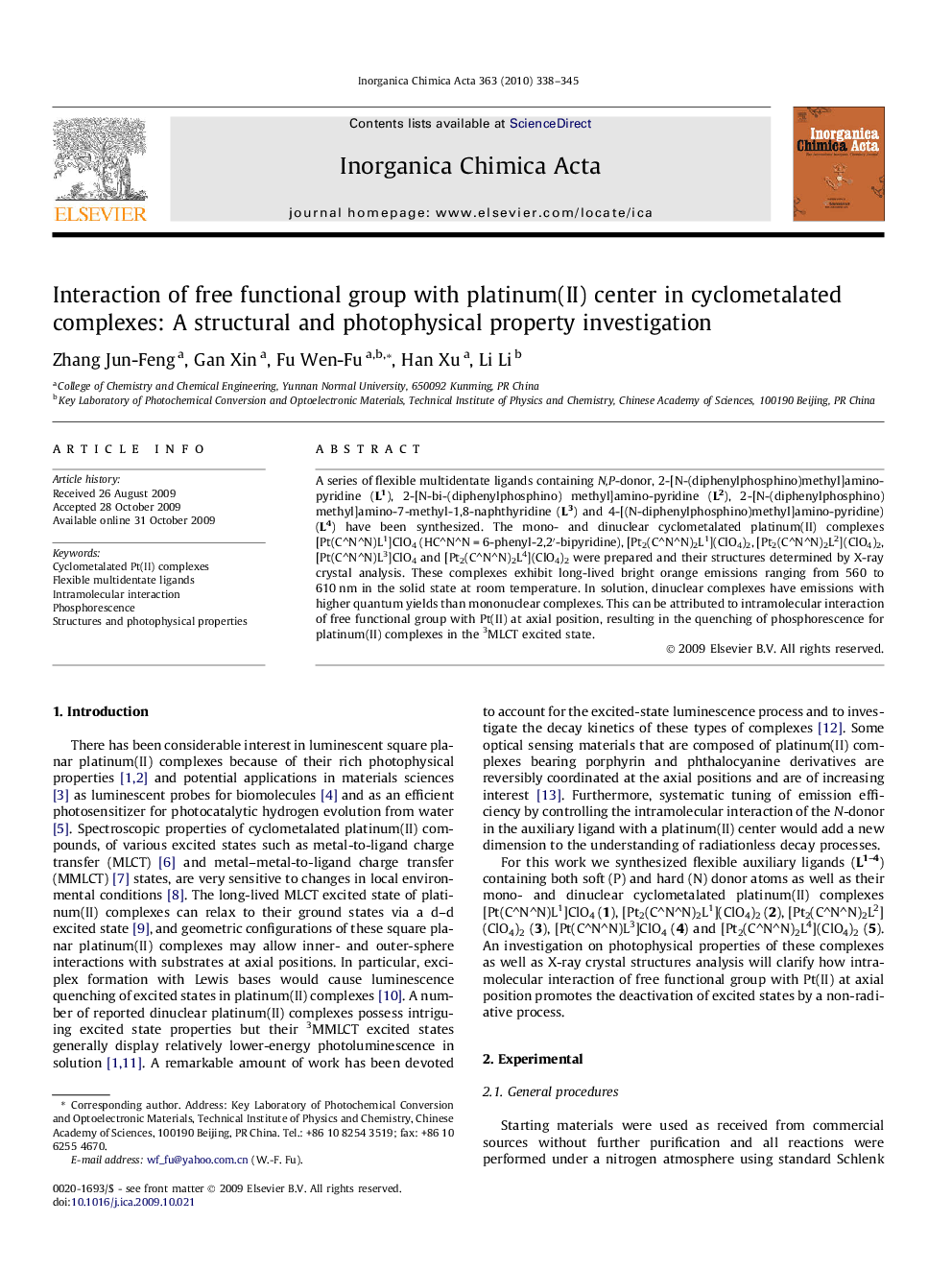| کد مقاله | کد نشریه | سال انتشار | مقاله انگلیسی | نسخه تمام متن |
|---|---|---|---|---|
| 1311265 | 975304 | 2010 | 8 صفحه PDF | دانلود رایگان |

A series of flexible multidentate ligands containing N,P-donor, 2-[N-(diphenylphosphino)methyl]amino-pyridine (L1), 2-[N-bi-(diphenylphosphino) methyl]amino-pyridine (L2), 2-[N-(diphenylphosphino)methyl]amino-7-methyl-1,8-naphthyridine (L3) and 4-[(N-diphenylphosphino)methyl]amino-pyridine) (L4) have been synthesized. The mono- and dinuclear cyclometalated platinum(II) complexes [Pt(C^N^N)L1]ClO4 (HC^N^N = 6-phenyl-2,2′-bipyridine), [Pt2(C^N^N)2L1](ClO4)2, [Pt2(C^N^N)2L2](ClO4)2, [Pt(C^N^N)L3]ClO4 and [Pt2(C^N^N)2L4](ClO4)2 were prepared and their structures determined by X-ray crystal analysis. These complexes exhibit long-lived bright orange emissions ranging from 560 to 610 nm in the solid state at room temperature. In solution, dinuclear complexes have emissions with higher quantum yields than mononuclear complexes. This can be attributed to intramolecular interaction of free functional group with Pt(II) at axial position, resulting in the quenching of phosphorescence for platinum(II) complexes in the 3MLCT excited state.
Flexible multidentate ligands containing N,P-donors, 2-[N-(diphenylphosphino)methyl]amino-pyridine (L1), 2-[N-bi-(diphenylphosphino) methyl]amino-pyridine (L2), 2-[N-(diphenylphosphino)methyl]amino-7-methyl-1,8-naphthyridine (L3) and 4-[(N-diphenylphosphino)methyl]amino-pyridine) (L4) as well as their mono- and dinuclear cyclometalated platinum(II) complexes [Pt(C^N^N)L1]ClO4 (HC^N^N = 6-phenyl-2,2′-bipyridine), [Pt2(C^N^N)2L1](ClO4)2, [Pt2(C^N^N)2L2](ClO4)2, [Pt(C^N^N)L3]ClO4 and [Pt2(C^N^N)2L4](ClO4)2 were synthesized and characterized. The non-radiative decay process of these photoexcited platinum(II) complexes can be systematically tuned by controlling the intramolecular interaction between the N-donor of auxiliary ligands and the platinum(II) center.Figure optionsDownload as PowerPoint slide
Journal: Inorganica Chimica Acta - Volume 363, Issue 2, 15 January 2010, Pages 338–345